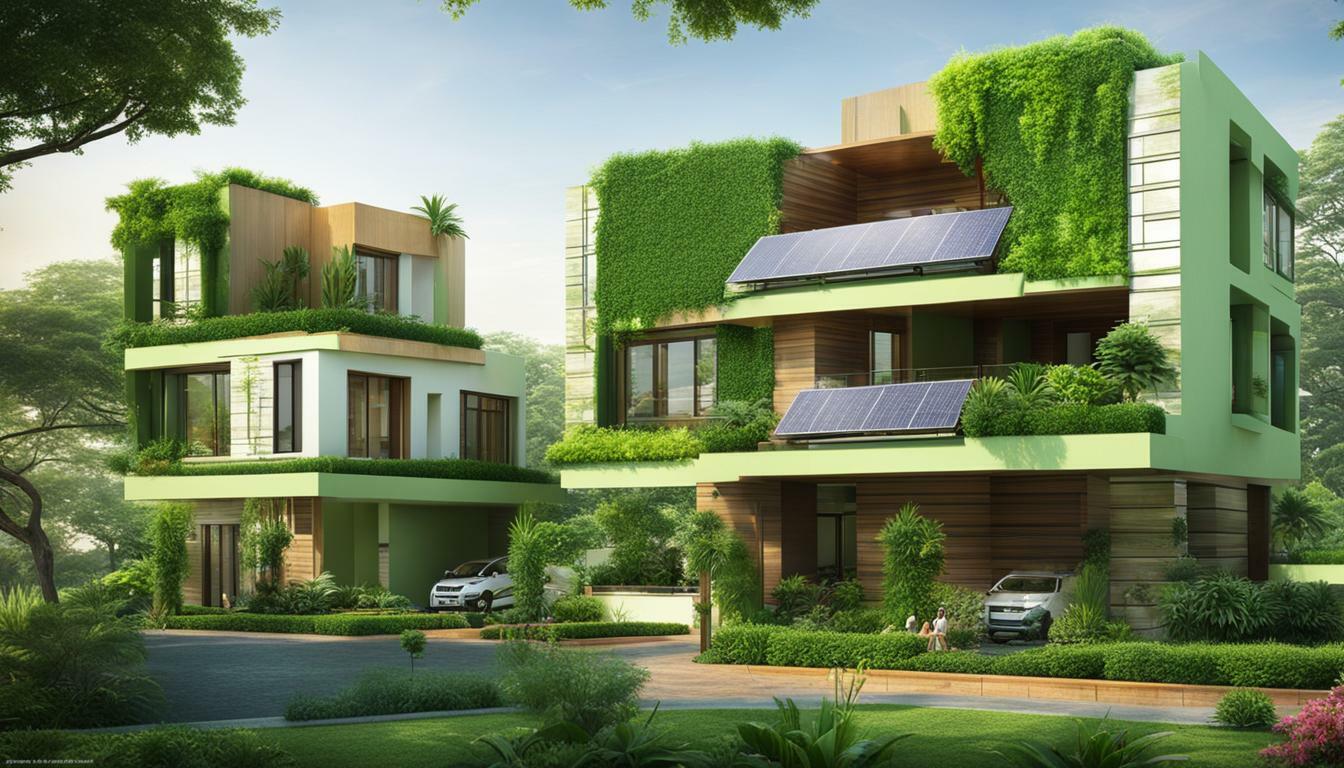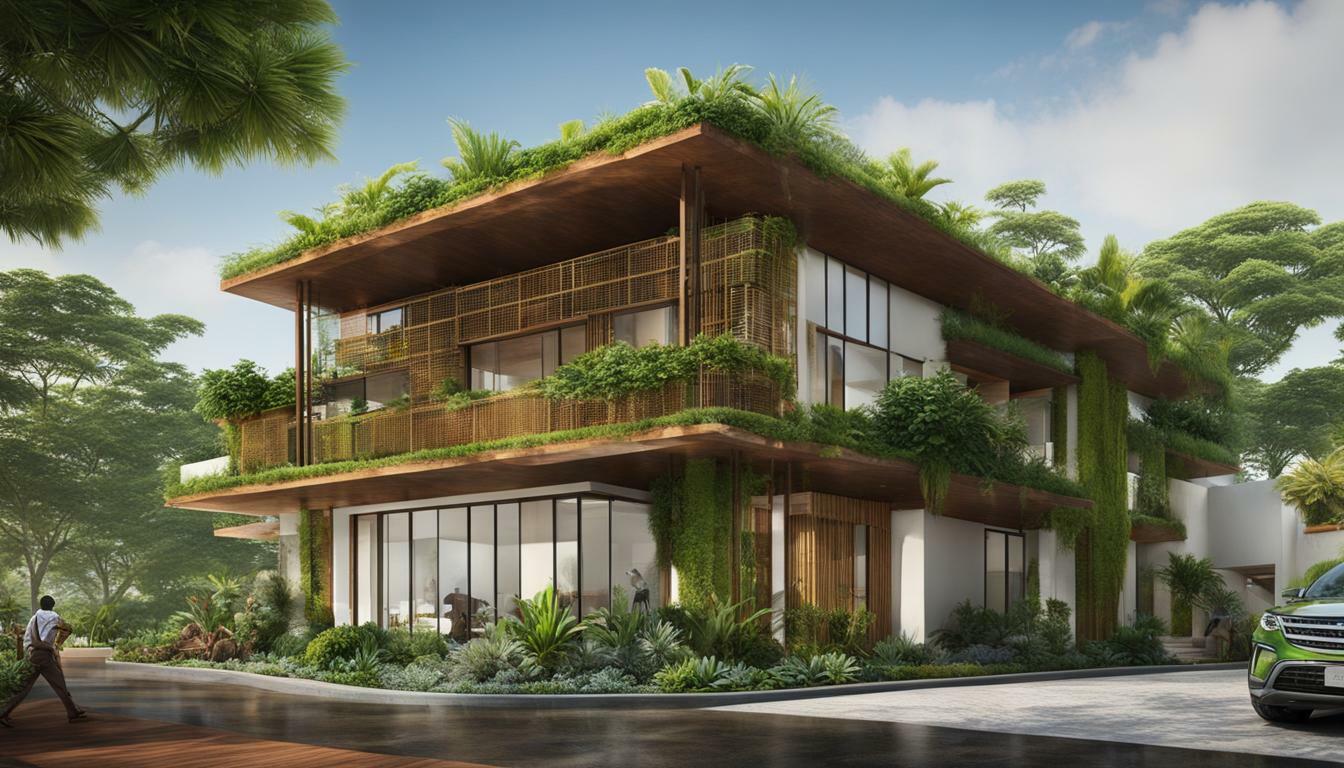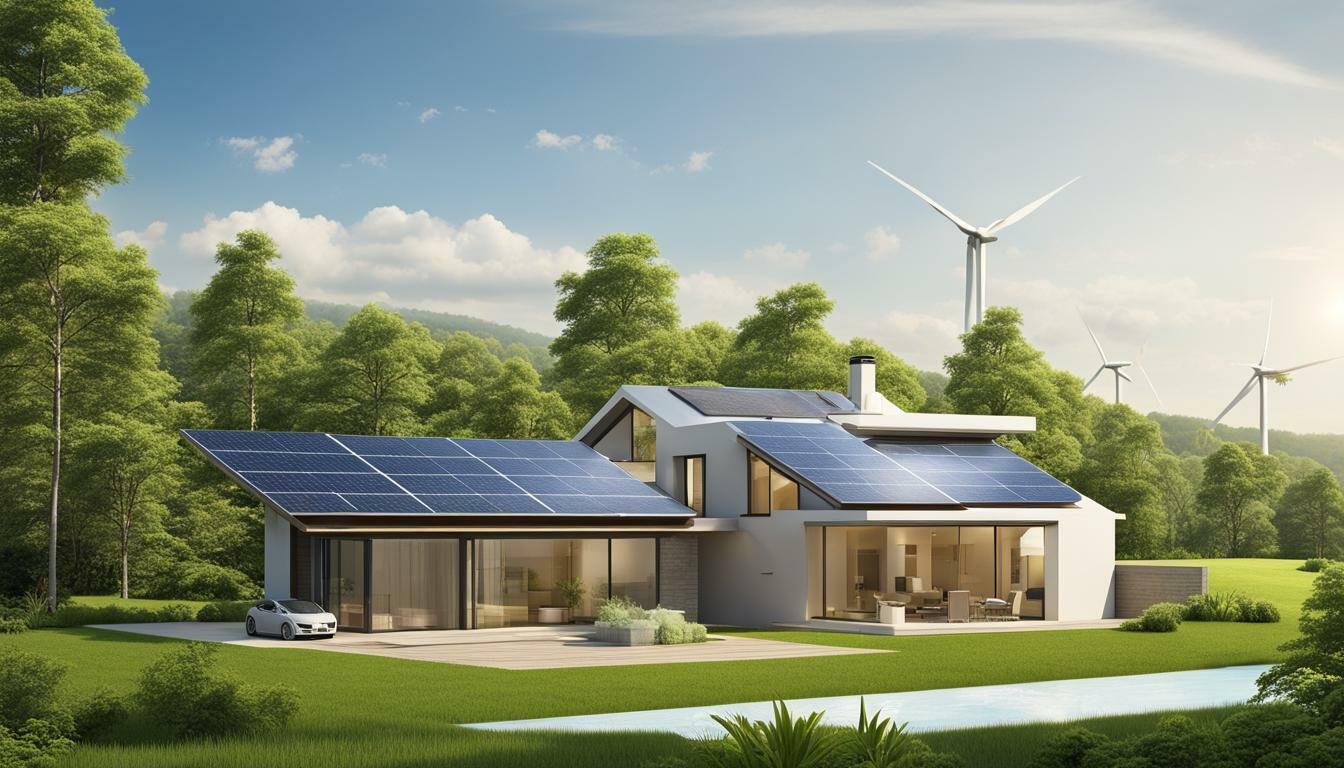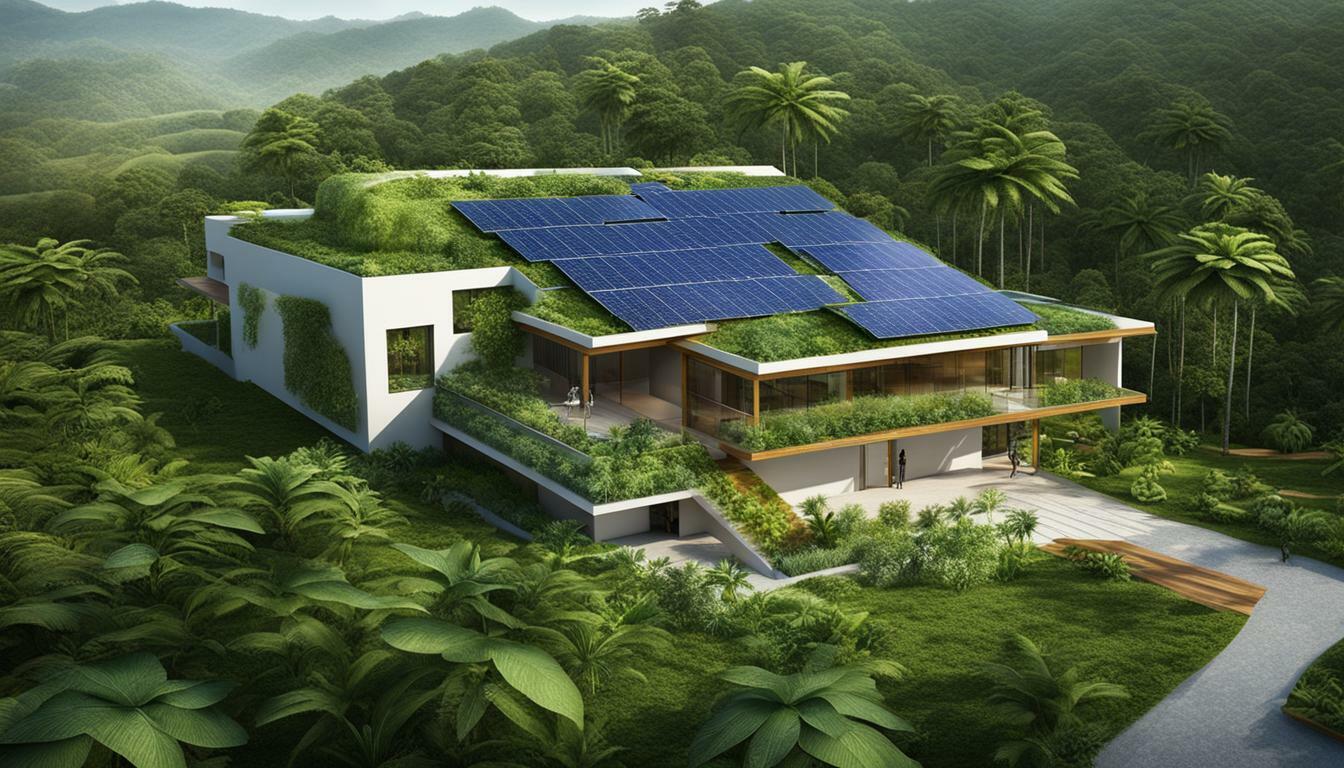Honduras Top Green Buildings
Honduras is home to some of the most innovative and environmentally friendly structures in the world, where sustainability meets architectural elegance. The country’s commitment to sustainable architecture and eco-friendly construction practices has led to the development of impressive green buildings.
Focusing on sustainable architecture and eco-friendly construction, these top green buildings in Honduras showcase the perfect blend of design and environmental consciousness. One such project is the Roatán Prospera Residence, developed by Zaha Hadid Architects on the picturesque island of Roatán.
This exclusive project not only emphasizes green building design but also highlights the integration of environmentally friendly structures with the local communities. By utilizing local resources, such as timber from the main island of Honduras, the architects reduce carbon emissions and support native communities, promoting a sustainable approach to construction.
The buildings in Honduras are carefully designed to seamlessly blend with the natural surroundings, creating a harmonious coexistence with the environment. By incorporating renewable energy sources, such as solar panels, these green buildings contribute to the reduction of carbon footprints and sustainable living.
Homeowners of these top green buildings have the opportunity to customize their homes, thanks to a digital platform developed by Zaha Hadid Architects. This not only adds a personal touch to their living space but also connects them with local suppliers, fostering the use of sustainable materials and supporting the local economy.
Key Takeaways:
- Honduras is home to innovative and environmentally friendly green buildings.
- The Roatán Prospera Residence project showcases sustainable architecture and eco-friendly construction.
- Local resources, like timber, are used to reduce carbon emissions and support native communities.
- The green buildings seamlessly blend with the natural surroundings.
- Renewable energy sources, such as solar panels, are incorporated into the design.
The Roatán Prospera Residence Project
One notable project in Honduras is the Roatán Prospera Residence, a groundbreaking development that embodies a harmonious blend of green building design and environmentally friendly structures. Developed by Zaha Hadid Architects on the island of Roatán, this project showcases the innovation and commitment to sustainability in the construction industry.
At the heart of the Roatán Prospera Residence project is the integration of local communities and the use of sustainable construction practices. The architects have prioritized the use of locally sourced materials, such as timber from the main island of Honduras, to reduce carbon emissions and support native communities. This not only benefits the environment but also strengthens the local economy.
The buildings in the Roatán Prospera Residence are thoughtfully designed to blend in with the natural surroundings, creating structures that are both aesthetically pleasing and environmentally friendly. The incorporation of renewable energy sources, including solar panels, further enhances the project’s commitment to sustainable living. Homeowners have the opportunity to customize their homes through a digital platform, allowing them to create spaces that meet their individual needs while also connecting with local suppliers. This promotes a sense of community and collaboration while supporting sustainable construction practices.
By focusing on green building design and environmentally friendly structures, the Roatán Prospera Residence project is setting a new standard for sustainable architecture in Honduras. It showcases the power of innovative thinking and the positive impact that construction projects can have on the environment and local communities. Through its commitment to sustainable living, this project will inspire future developments that prioritize eco-friendly practices and contribute to a greener future.
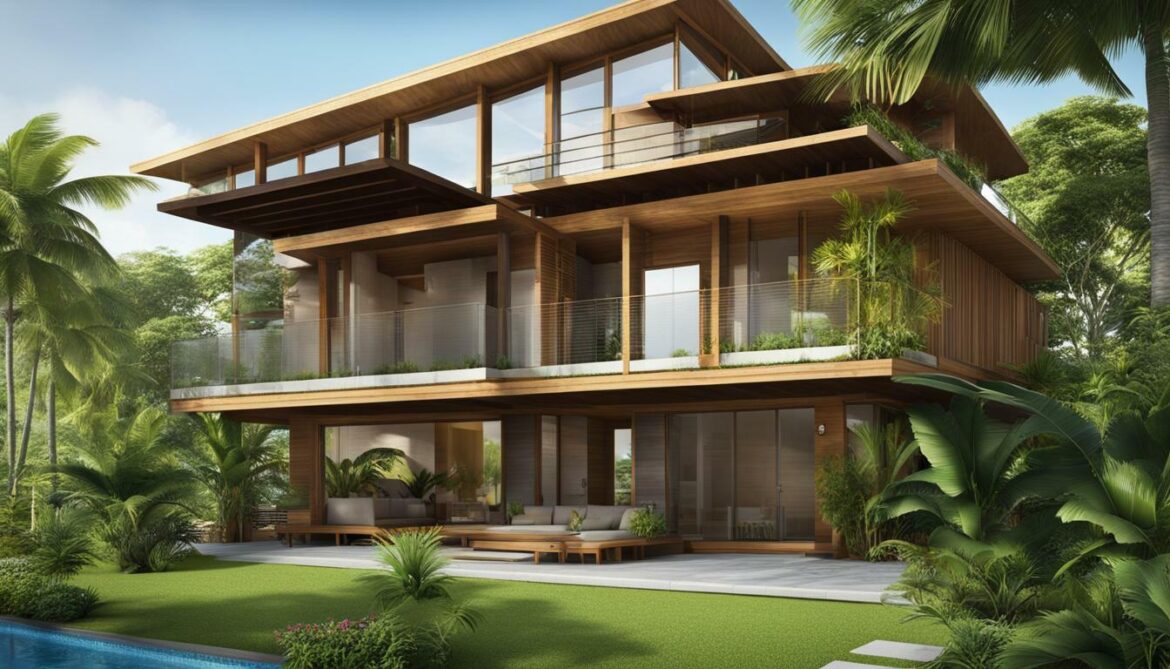
| Key Features | Benefits |
|---|---|
| Integration with local communities | Strengthens the local economy, promotes collaboration |
| Use of sustainable construction practices | Reduces carbon emissions, supports eco-friendly development |
| Blending with natural surroundings | Enhances aesthetics, creates environmentally friendly structures |
| Incorporation of renewable energy sources | Contributes to energy efficiency, promotes sustainable living |
| Customization and connection with local suppliers | Promotes community engagement, supports sustainable construction practices |
Integration with Local Communities
The developers of Honduras’ top green buildings recognize the significance of local communities and embrace sustainable construction practices, utilizing green building materials sourced from within Honduras. One notable example is the Roatán Prospera Residence project, designed by Zaha Hadid Architects. This project not only focuses on environmentally sustainable properties, but also prioritizes integration with the local community.
The architects behind the Roatán Prospera Residence project understand the importance of supporting native communities and reducing carbon emissions. To achieve this, they make use of local resources, such as timber from the main island of Honduras. By sourcing materials locally, they not only minimize the ecological impact associated with transportation, but also contribute to the economic growth of these communities.
In addition to utilizing green building materials, the top green buildings in Honduras also aim to blend seamlessly with their natural surroundings. By harmonizing with the environment, these structures become part of the landscape rather than standing out. This focus on design not only enhances the aesthetic appeal of the buildings, but also minimizes the ecological footprint, creating environmentally friendly structures that coexist with nature.
To further promote sustainable living, the developers have incorporated renewable energy sources into the design of the top green buildings. Solar panels are a common feature, harnessing the abundant sunlight in Honduras to generate clean energy. This commitment to renewable energy not only reduces the buildings’ reliance on traditional power sources, but also contributes to a more sustainable future.
| Benefits of Integration with Local Communities: |
|---|
| Supports native communities |
| Reduces carbon emissions |
| Promotes economic growth |
| Enhances aesthetic appeal |
| Minimizes ecological footprint |
| Utilizes renewable energy sources |
“We believe that sustainable construction practices can make a positive impact on both the environment and the local community. By integrating with local communities and implementing green building materials, we strive to create buildings that not only respect and enhance the natural surroundings but also contribute to the overall well-being of the people living in these areas.” – Zaha Hadid Architects
Blending with Natural Surroundings
One striking aspect of Honduras’ top green buildings is their ability to effortlessly blend with the breathtaking natural surroundings, highlighting their commitment to sustainable architecture. These environmentally friendly structures, developed by Zaha Hadid Architects on the island of Roatán, showcase the innovative integration of sustainable design with the beauty of the local environment.
The architects behind the Roatán Prospera Residence project understand the importance of harmonizing with nature. By using organic shapes, earthy colors, and sustainable materials, they have managed to create buildings that appear to emerge from the landscape itself. This deep connection to the natural surroundings not only enhances the visual appeal of the structures but also minimizes their impact on the environment.
From the moment you set foot in the vicinity of these green buildings, you can sense the seamless transition between man-made and natural elements. The use of large windows and open spaces allows for ample natural light and ventilation, blurring the lines between the indoor and outdoor spaces. This design approach not only offers stunning panoramic views but also fosters a deeper appreciation for the natural world, inspiring a sense of responsibility towards its preservation.
Moreover, the incorporation of renewable energy sources, such as solar panels, further enhances the sustainability of these green buildings. Harnessing the abundant sunshine of Roatán, these structures generate clean energy while reducing their carbon footprint. This commitment to eco-friendly practices extends beyond the architecture itself and permeates every aspect of these top green buildings, promoting a more sustainable way of living for the homeowners and the surrounding community.
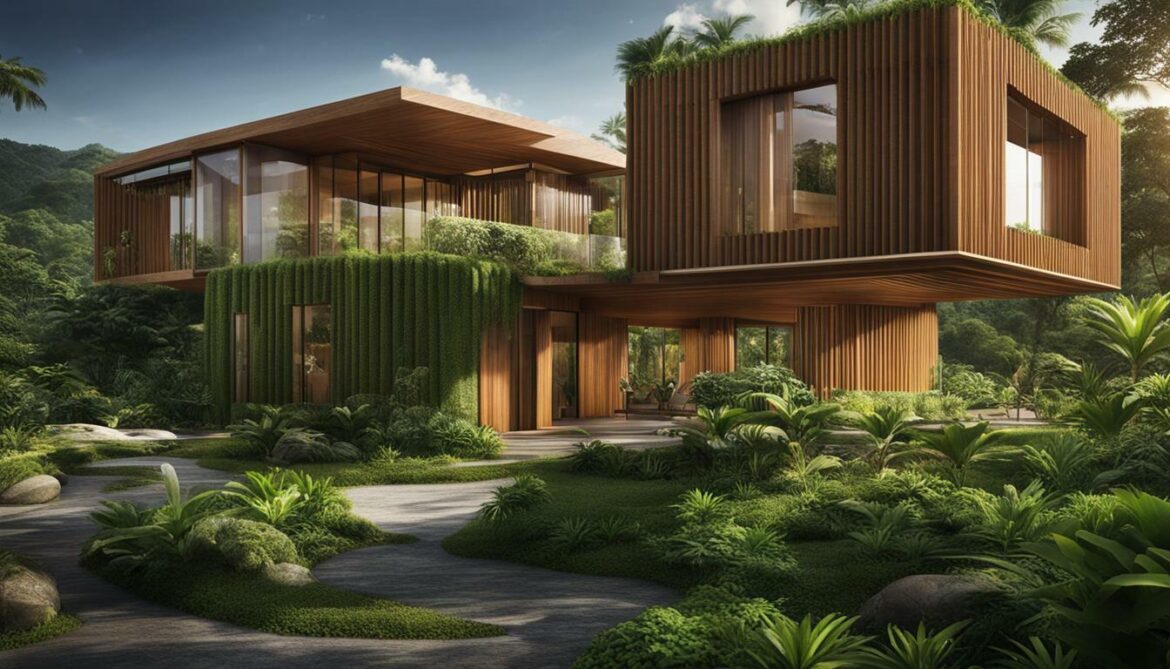
| Feature | Description |
|---|---|
| Organic Design | Buildings are designed with organic shapes and colors, blending seamlessly with the natural surroundings. |
| Ample Natural Light | Large windows and open spaces allow for the entry of natural light, enhancing the connection between indoor and outdoor spaces. |
| Sustainable Materials | Environmentally friendly materials are used to minimize the buildings’ impact on the environment. |
| Renewable Energy | The incorporation of solar panels enables the generation of clean energy, reducing carbon emissions. |
By effortlessly blending with the natural surroundings, Honduras’ top green buildings exemplify the possibilities of sustainable architecture. These environmentally friendly structures not only inspire awe with their beauty but also serve as a reminder of the importance of living in harmony with nature.
Incorporating Renewable Energy Sources
In line with their commitment to sustainability, the top green buildings in Honduras boast the integration of renewable energy sources, making them highly energy-efficient structures. The use of renewable energy not only reduces reliance on non-renewable resources but also significantly decreases carbon emissions, contributing to a greener and cleaner environment.
One of the key renewable energy sources incorporated into these buildings is solar power. By harnessing the abundant sunlight in Honduras, solar panels are installed on the rooftops of these green buildings, generating clean and renewable electricity. The energy harvested from the sun is used to power various electrical appliances, heating systems, and lighting within the buildings, reducing the need for conventional energy sources.
This integration of renewable energy in the top green buildings also includes advanced energy management systems. These systems monitor and optimize the use of electricity, ensuring that energy is used efficiently and effectively. By intelligently controlling the power consumption, these buildings minimize wastage and maximize energy savings, making them highly energy-efficient and cost-effective in the long run.
Furthermore, these buildings also explore other renewable energy sources, such as wind power and geothermal energy. Wind turbines and geothermal heating systems are utilized to harness the power of nature and provide additional renewable energy solutions. This diverse range of renewable energy sources allows the top green buildings in Honduras to achieve a high level of energy independence and sustainability, reducing their environmental impact and paving the way for a greener future.
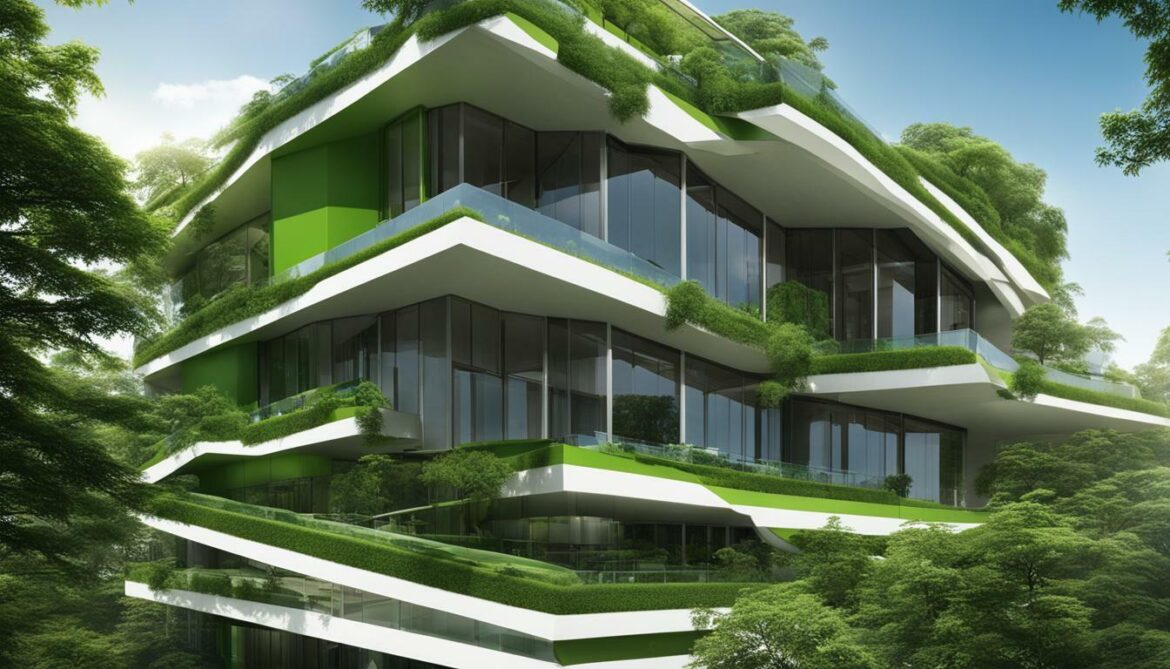
| Benefits of Incorporating Renewable Energy Sources |
|---|
| 1. Reduced carbon footprint and greenhouse gas emissions |
| 2. Increased energy efficiency and cost savings |
| 3. Improved energy independence and resilience |
| 4. Utilization of abundant and clean sources of energy |
| 5. Contribution to a sustainable and eco-friendly future |
Customization and Local Supplier Connection
Homeowners of Honduras’ top green buildings have the privilege of personalizing their homes through innovative green building design concepts, all while supporting the local economy by engaging with local suppliers. The Roatán Prospera Residence project, developed by Zaha Hadid Architects, offers a unique opportunity for homeowners to create environmentally sustainable properties that reflect their individual style and preferences.
The architects behind the project have embraced a sustainable approach by using local resources, such as timber sourced from the main island of Honduras. By utilizing materials from the surrounding area, the project reduces carbon emissions associated with transportation and supports native communities. This not only contributes to the overall sustainability of the buildings but also fosters a strong connection between the homeowners and the local environment.
To further enhance the customization process, Zaha Hadid Architects has developed a digital platform that allows homeowners to explore and personalize various aspects of their homes. From choosing energy-efficient appliances to selecting eco-friendly finishes, the platform empowers homeowners to make informed decisions that align with their values and contribute to sustainable living.
In addition to customization, the project emphasizes the importance of connecting with local suppliers. By engaging with local businesses and artisans, homeowners not only support the local economy but also promote sustainable construction practices. This connection with local suppliers ensures that the materials used in the construction process are ethically sourced, minimizing the environmental impact and contributing to the overall sustainability of the project.
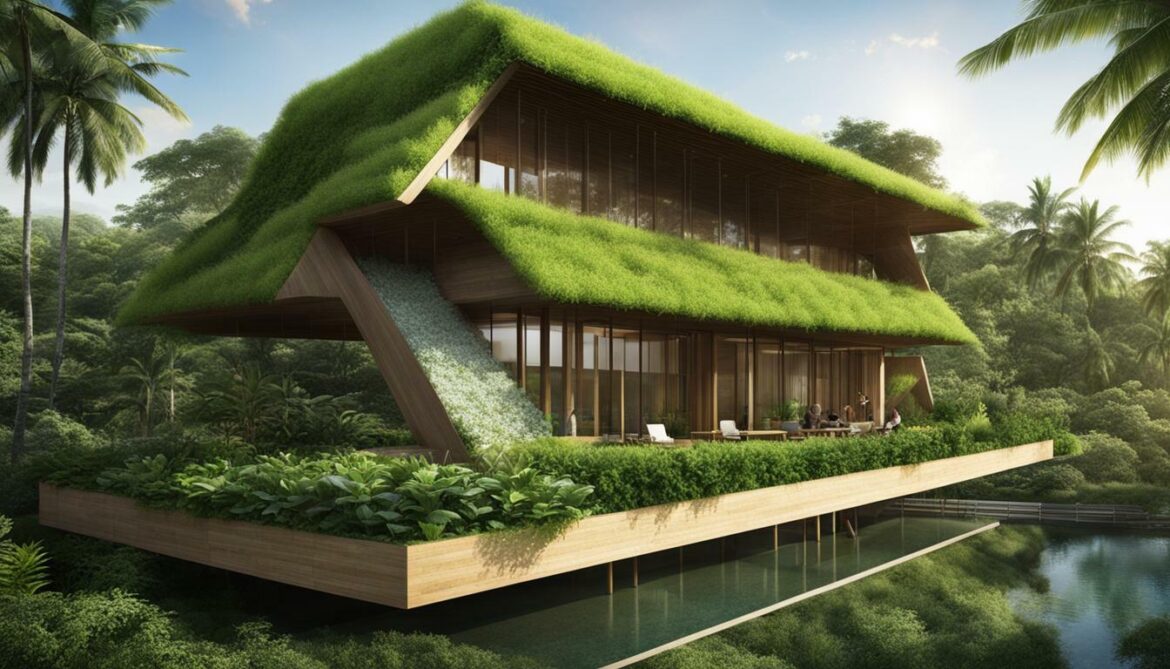
By combining innovative green building design concepts with a focus on supporting the local economy and engaging with local suppliers, the Roatán Prospera Residence project exemplifies the possibilities of sustainable living in Honduras. Through customization and a connection with the local community, homeowners can create homes that not only reflect their personal style but also contribute to a greener and more sustainable future.
Strengthening the Local Economy
The creation of Honduras’ top green buildings not only serves the purpose of sustainability but also plays a crucial role in bolstering the local economy by prioritizing sustainable construction practices and utilizing green building materials. One example of this is the Roatán Prospera Residence project, developed by Zaha Hadid Architects on the island of Roatán.
These environmentally sustainable properties are designed to integrate with local communities, promoting a sense of belonging and shared responsibility for the environment. By using local resources, such as timber from the main island of Honduras, the project reduces carbon emissions and supports native communities, fostering a stronger local economy.
The top green buildings in Honduras are carefully designed to blend harmoniously with the natural surroundings, showcasing environmentally friendly structures. The incorporation of renewable energy sources, such as solar panels, further enhances their sustainability credentials. These energy-efficient buildings not only reduce the carbon footprint but also contribute to the overall resilience and self-sufficiency of the communities.
As part of the project, homeowners have the opportunity to customize their homes through a digital platform developed by Zaha Hadid Architects. This not only allows for personalized living spaces but also encourages connections with local suppliers, promoting sustainable construction practices and stimulating local business growth. By prioritizing green building design, the project demonstrates the potential for sustainable living while strengthening the local economy.
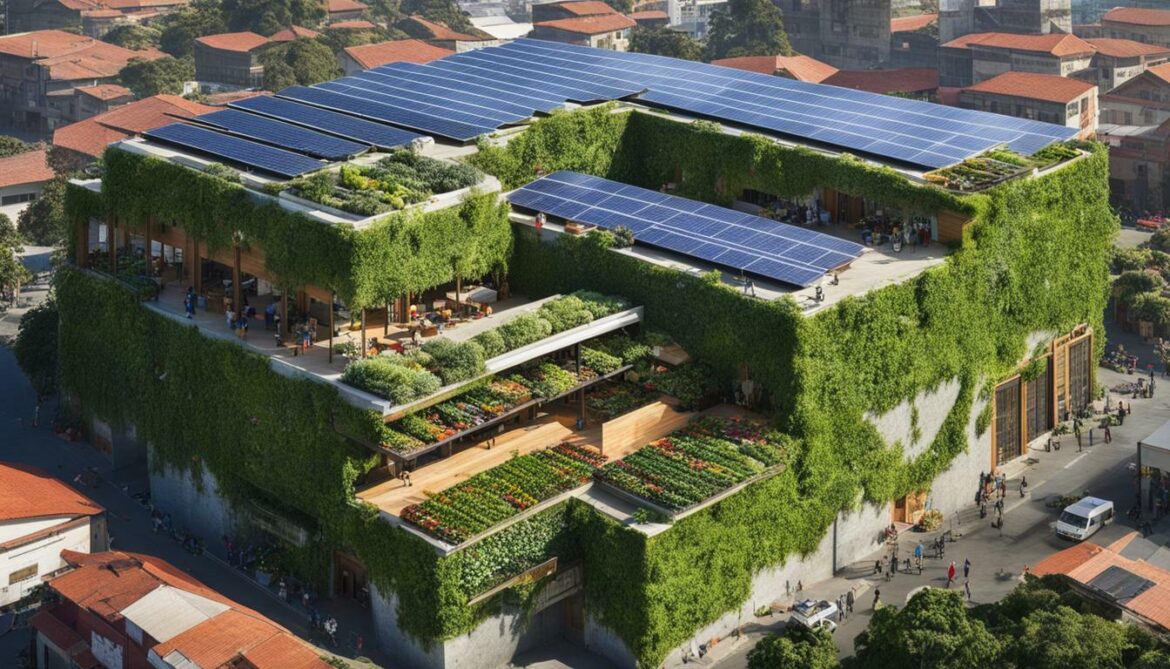
| Benefits of Honduras’ Top Green Buildings |
|---|
| Reduced carbon emissions |
| Integration with local communities |
| Support for native communities |
| Blending with natural surroundings |
| Incorporation of renewable energy sources |
| Customization for homeowners |
| Promotion of sustainable construction practices |
| Strengthening of the local economy |
Conclusion
In conclusion, Honduras’ commitment to sustainable architecture is evident in its top green buildings, which include LEED certified structures, innovative green building design concepts, and a genuine drive towards promoting sustainable living.
Zaha Hadid Architects, renowned for their exceptional designs, are at the forefront of developing Honduras’ top green buildings. One notable project is the Roatán Prospera Residence, which showcases the integration of environmentally sustainable properties with local communities.
Emphasizing the use of local resources, such as timber sourced from the main island of Honduras, the architects reduce carbon emissions and actively support native communities. These buildings are purposefully designed to seamlessly blend in with the natural surroundings, creating harmonious and environmentally friendly structures.
Renewable energy sources play a significant role in the top green buildings of Honduras. Incorporating solar panels and other sustainable practices, these structures prioritize energy efficiency and contribute to the overall goal of sustainable living. Additionally, the digital platform developed by Zaha Hadid Architects allows homeowners to personalize their homes while also connecting with local suppliers, further promoting sustainable construction practices.
Not only do these top green buildings benefit the environment, but they also strengthen the local economy. Through the use of sustainable construction practices and the integration of green building materials, Honduras’ green building sector provides employment opportunities and supports the growth of local industries.
Honduras’ dedication to sustainable architecture, as showcased in its top green buildings, embodies a progressive approach towards creating a more environmentally conscious future. With LEED certified structures, innovative green building design concepts, and a commitment to promoting sustainable living, Honduras sets an example for sustainable development worldwide.
FAQ
What is the focus of the Roatán Prospera Residence project?
The Roatán Prospera Residence project focuses on environmentally sustainable properties that integrate with local communities.
What resources are being used to reduce carbon emissions and support native communities?
The architects are using local resources, such as timber from the main island of Honduras, to reduce carbon emissions and support native communities.
How are the buildings designed to blend in with the natural surroundings?
The buildings are designed to seamlessly blend with the natural surroundings, creating environmentally friendly structures.
What renewable energy sources are incorporated into the top green buildings in Honduras?
The top green buildings in Honduras incorporate renewable energy sources, such as solar panels.
How can homeowners customize their homes in the Roatán Prospera Residence project?
Homeowners in the Roatán Prospera Residence project can customize their homes through a digital platform developed by Zaha Hadid Architects.
How does the project aim to strengthen the local economy?
The project aims to strengthen the local economy by promoting sustainable living and connecting homeowners with local suppliers.
Source Links
- https://hashtaglegend.com/culture/zaha-hadid-architects-sustainable-roatan-prospera-residences-honduras/
- https://www.fitlifecreation.com/post/sustainability-bioclimatic-tropical-architecture-in-honduras
- https://robbreport.com/shelter/home-design/zaha-hadid-architects-unveils-roatan-prospera-residences-in-caribbean-2939386/



